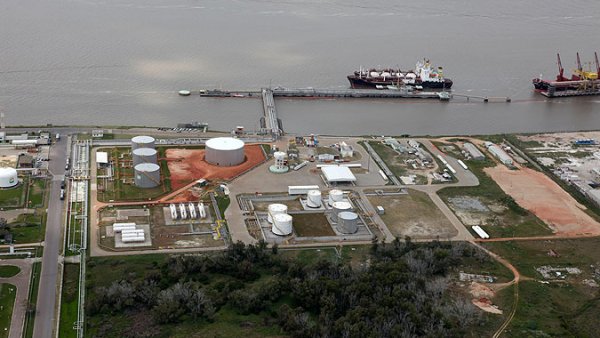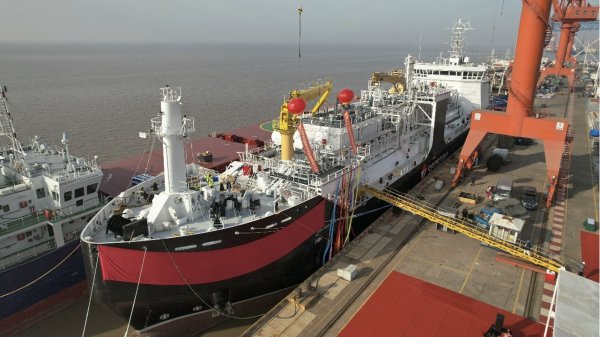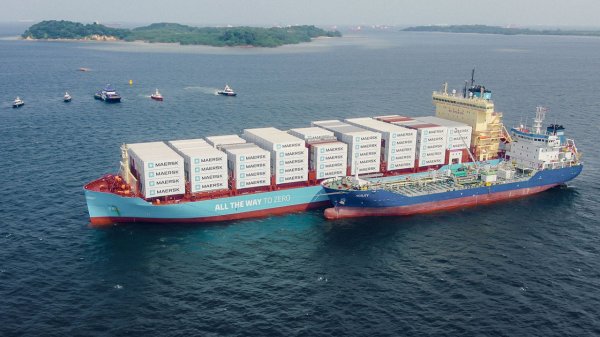Researchers claim 'big step forward' in efficient production of non-food biofuel
Project develops new solvent for dissolving biomass cellulose.
Researchers at Kanazawa University, Japan, claim to have developed a new type of solvent for the production of next-generation, non-food biofuel.
According to a research paper, entitled 'Design of wall-destructive but membrane-compatible solvents', a novel carboxylate-type liquid zwitterion was developed as a solvent of biomass, which could be used to dissolve cellulose with very low toxicity to microorganisms.
Background
As first-generation biofuel is produced from foodstuffs such maize, it raises concerns about a possible future food shortage. For this reason, the idea behind producing second-generation biofuel is to use non-food biomass such as weeds, waste paper and paper cups.
However, the solvents used for the production of second-generation biofuel up until now have been highly toxic to microorganisms, so in order to remove the toxic solvents, complex processes are used, such as washing with water, separation by centrifugation, and compression, which in turn use up a lot of energy and are negative for the environment.
Project
The researchers say they succeeded in reducing the toxicity to microorganisms by developing a novel solvent, a carboxylate-type liquid zwitterion, for dissolving biomass cellulose.
EC50, the concentration of a substance that reduces the growth of Escherichia coli to 50 percent, was found to be 158 g/L for the newly developed carboxylate-type liquid zwitterion, whereas the EC50 of ionic liquid - one of the conventional solvents of cellulose - was 9 g/L.
This, the researchers say, indicates that the novel carboxylate-type liquid zwitterion shows 17-fold lower toxicity than the ionic liquid.
With Escherichia coli that can produce ethanol, fermentation ability was examined and revealed to be almost maximal in 0.5 mol/L carboxylate-type liquid zwitterion with a final ethanol concentration of 21 g/L, while the same experiment with the ionic liquid produced only 1 g/L ethanol. Thus, fermentation in the presence of the carboxylate-type liquid zwitterion produced 21 times more ethanol than that using ionic liquid.
In another experiment, bagasse was used as a starting plant biomass for ethanol production without washing/separation processes. Fermentation in the presence of the carboxylate-type liquid zwitterion produced 1.4 g/L ethanol, while no ethanol was obtained with the ionic liquid due to its high toxicity.
With these experimental results, the researchers say that using the carboxylate-type liquid zwitterion, plant biomass could be converted into ethanol in a single reaction pot without washing/separation processes.
"This should be a big step forward in the production/utilization of second-generation biofuel ethanol through reducing large amounts of energy input," the researchers said.
Third-generation biofuel
The researchers also claim that further development of their study would significantly contribute to the potential production of third-generation biofuel ethanol - a kind of oil that could be made from algae.
In order to obtain a third-generation biofuel from algal species, polysaccharides like cellulose, which are main components of cell walls, need to be dissolved.
Energy efficiency would increase significantly if dissolved polysaccharides could be converted into ethanol, the researchers say.
Last week's report
On Friday, Bunker Index reported that Lloyd's Register and London's University Maritime Advisory Services (UMAS) had released a report that ranked biofuel as the best zero-emission solution currently available to power ships.
The report stressed that advanced, non-food-derived, sustainability-certified biofuel will be required if the amount needed to fuel the shipping industry is not to clash with the basic need for food with a growing global population.
According to a research paper, entitled 'Design of wall-destructive but membrane-compatible solvents', a novel carboxylate-type liquid zwitterion was developed as a solvent of biomass, which could be used to dissolve cellulose with very low toxicity to microorganisms.
Background
As first-generation biofuel is produced from foodstuffs such maize, it raises concerns about a possible future food shortage. For this reason, the idea behind producing second-generation biofuel is to use non-food biomass such as weeds, waste paper and paper cups.
However, the solvents used for the production of second-generation biofuel up until now have been highly toxic to microorganisms, so in order to remove the toxic solvents, complex processes are used, such as washing with water, separation by centrifugation, and compression, which in turn use up a lot of energy and are negative for the environment.
Project
The researchers say they succeeded in reducing the toxicity to microorganisms by developing a novel solvent, a carboxylate-type liquid zwitterion, for dissolving biomass cellulose.
EC50, the concentration of a substance that reduces the growth of Escherichia coli to 50 percent, was found to be 158 g/L for the newly developed carboxylate-type liquid zwitterion, whereas the EC50 of ionic liquid - one of the conventional solvents of cellulose - was 9 g/L.
This, the researchers say, indicates that the novel carboxylate-type liquid zwitterion shows 17-fold lower toxicity than the ionic liquid.
With Escherichia coli that can produce ethanol, fermentation ability was examined and revealed to be almost maximal in 0.5 mol/L carboxylate-type liquid zwitterion with a final ethanol concentration of 21 g/L, while the same experiment with the ionic liquid produced only 1 g/L ethanol. Thus, fermentation in the presence of the carboxylate-type liquid zwitterion produced 21 times more ethanol than that using ionic liquid.
In another experiment, bagasse was used as a starting plant biomass for ethanol production without washing/separation processes. Fermentation in the presence of the carboxylate-type liquid zwitterion produced 1.4 g/L ethanol, while no ethanol was obtained with the ionic liquid due to its high toxicity.
With these experimental results, the researchers say that using the carboxylate-type liquid zwitterion, plant biomass could be converted into ethanol in a single reaction pot without washing/separation processes.
"This should be a big step forward in the production/utilization of second-generation biofuel ethanol through reducing large amounts of energy input," the researchers said.
Third-generation biofuel
The researchers also claim that further development of their study would significantly contribute to the potential production of third-generation biofuel ethanol - a kind of oil that could be made from algae.
In order to obtain a third-generation biofuel from algal species, polysaccharides like cellulose, which are main components of cell walls, need to be dissolved.
Energy efficiency would increase significantly if dissolved polysaccharides could be converted into ethanol, the researchers say.
Last week's report
On Friday, Bunker Index reported that Lloyd's Register and London's University Maritime Advisory Services (UMAS) had released a report that ranked biofuel as the best zero-emission solution currently available to power ships.
The report stressed that advanced, non-food-derived, sustainability-certified biofuel will be required if the amount needed to fuel the shipping industry is not to clash with the basic need for food with a growing global population.

|
VARO Energy expands renewable portfolio with Preem acquisition
All-cash transaction expected to complete in the latter half of 2025. |
|
|
|
||

|
NYK trials biofuel in milestone coal carrier test
Vessel is used to test biofuel for domestic utility company. |
|
|
|
||

|
H-Line Shipping orders LNG bunkering vessel
Vessel with 18,000-cbm capacity to run on both LNG and MDO. |
|
|
|
||

|
How to engineer and manage green shipping fuels | Stanley George, VPS
Effective management strategies and insights for evolving fuel use. |
|
|
|
||

|
Swedish government bans scrubber wastewater discharges
Discharges from open-loop scrubbers to be prohibited in Swedish waters from July 2025. |
|
|
|
||

|
MAN Energy Solutions achieves 100% load milestone for ammonia engine
Latest tests validate fuel injection system throughout the entire load curve. |
|
|
|
||

|
Petrobras secures ISCC EU RED certification for B24 biofuel blend at Rio Grande
Blend consisting of 24% FAME is said to have been rigorously tested to meet international standards. |
|
|
|
||

|
Stolt-Nielsen to fully control Avenir LNG with acquisition
Share purchase agreement to buy all shares from Golar LNG and Aequitas. |
|
|
|
||

|
Bureau Veritas supports launch of CIMC SOE's LNG bunkering vessel
Handover of Seaspan Energy's cutting-edge 7,600-cbm vessel completed. |
|
|
|
||

|
Methanol as a marine fuel | Steve Bee, VPS
How environmental legislation has driven the development of low-sulphur fuels and methanol-ready ships. |
|
|
|
||
Related Links
- · New report ranks biofuel as best zero-emission solution [Insights]
- · BHP, GoodFuels to collaborate on biofuel bunker project in Singapore [Insights]
- · Biofuel bunker supplier GoodFuels seeks finance manager [Insights]
- · Biofuel-powered shipping route to launch from Rotterdam to New York [Insights]
- · New ISO marine fuel standard ushers in specs for biofuel blends [Insights]
- · Preem, Vattenfall in large-scale biofuel production tie-up [Insights]
- · Japan [Directory]

